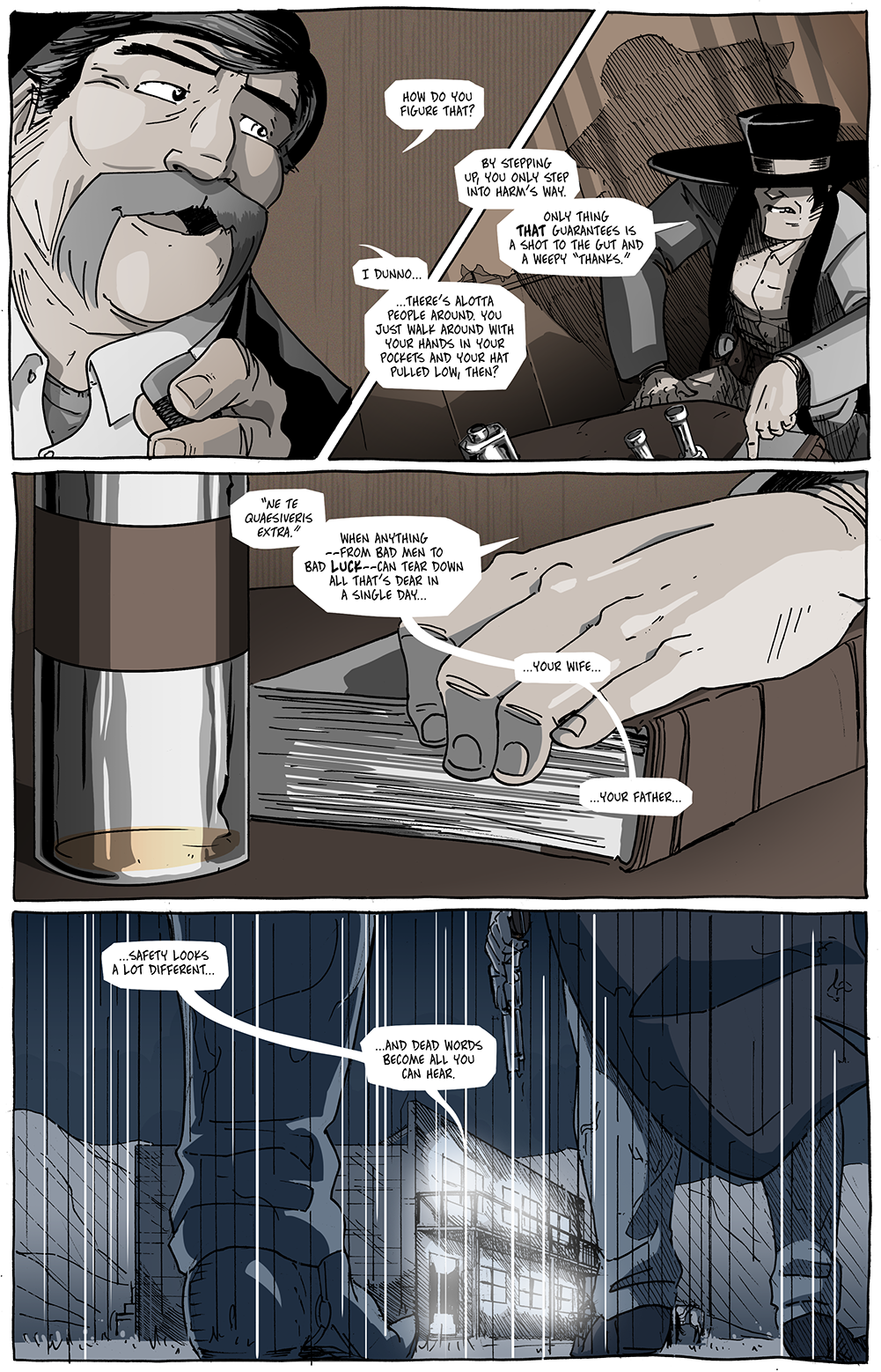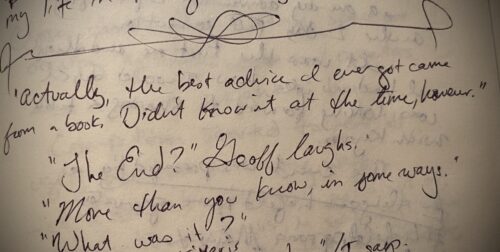The Look of Safety
Part of the joke with Long John is that the most interesting parts of it happen in the quiet dialogue instead of the big action scenes. In fact, the action scenes are chaotic and off-putting, emphasizing the horrific disgusting nature of violence rather than glorifying it (at least, that’s the hope).
The problem is that the big dialogue scenes that are meant to be important, revealing, and character-driven are always the hardest to write. Again, this is where one could point to the benefit of a novel versus a comic, but even then there’s an art to brevity.
My general strategy is to over-write––to get it all out so I can cut it down to what I need; I last talked about this with the big Long John-Jonny Mono fight at the end of Chapter 3, but it’s worth repeating. Like most writers telling a long story, I have all (or most) of the big plot points in my head along with the big character moments along the way. However, my head is a swimming, goopy mess in most moments, so a perfect translation from the brain to the page in a single go is impossible. So, in my journal I do a lot of my prewriting in, I dare myself to answer the question, “What do I know?” I tend to just dump all the information onto the page from which I can pick and choose what I need for the comic. What’s ironic (or appropriate) is that this is actually a strategy I stole from my day job––something we in the Composition and Rhetoric field call “freewriting.”
It’s a classic idea-generating technique, but in my academic field was really honed by one of my CompRhet heroes, Peter Elbow, who gave it its modern pedagogical context. It’s something I emphasize for my students and is likely––more than anything I teach in my classes––the thing they find the most personal value in by the end of the semester. I think it was a technique I likely utilized beforehand but it was irregular because I hadn’t really codified or, at best, understood my own process––instead I waited for inspiration to waft over me and guide me home (something that very much doesn’t work for me). The more I used it, the more helpful it became. So it was while writing this chapter and its own important, but quiet, dialogue scene.
For this scene, I knew I wanted to lay in a bit of backstory for our protagonist, but I wasn’t sure how much. Scenes like this previously had been the most laborious––the jail scene in Chapter 1, the talk with Lady May in Chapter 2, the talk with Juan at the beginning of Chapter 3 (and the fight with Jonny at its end)––and to each of those I found a path after asking in my journal, “What do I know?” For this scene, my answer resulted in six full hand-written pages of backstory. Out of which I only pulled enough to fill the dialogue for the middle panel on the page.
Part of this is knowing how many pages I have allotted for a scene and how much space in a scene I can dedicate to thoughtful discourse versus actually moving plot forward. The real question you’re asking when getting all that information out is “how important is what you know actually important to the reader?” Well, with two ominous figures standing in the rain at the end of this page, I’m going to say the answer must be, “not much.” Maybe next time.




Discussion ¬